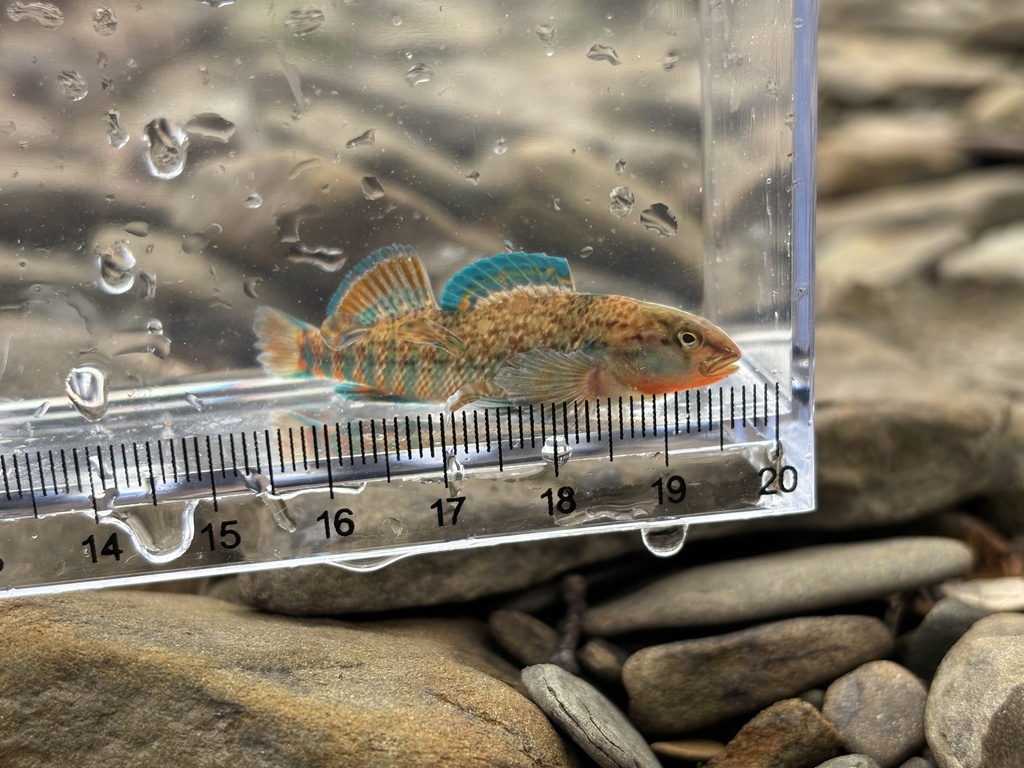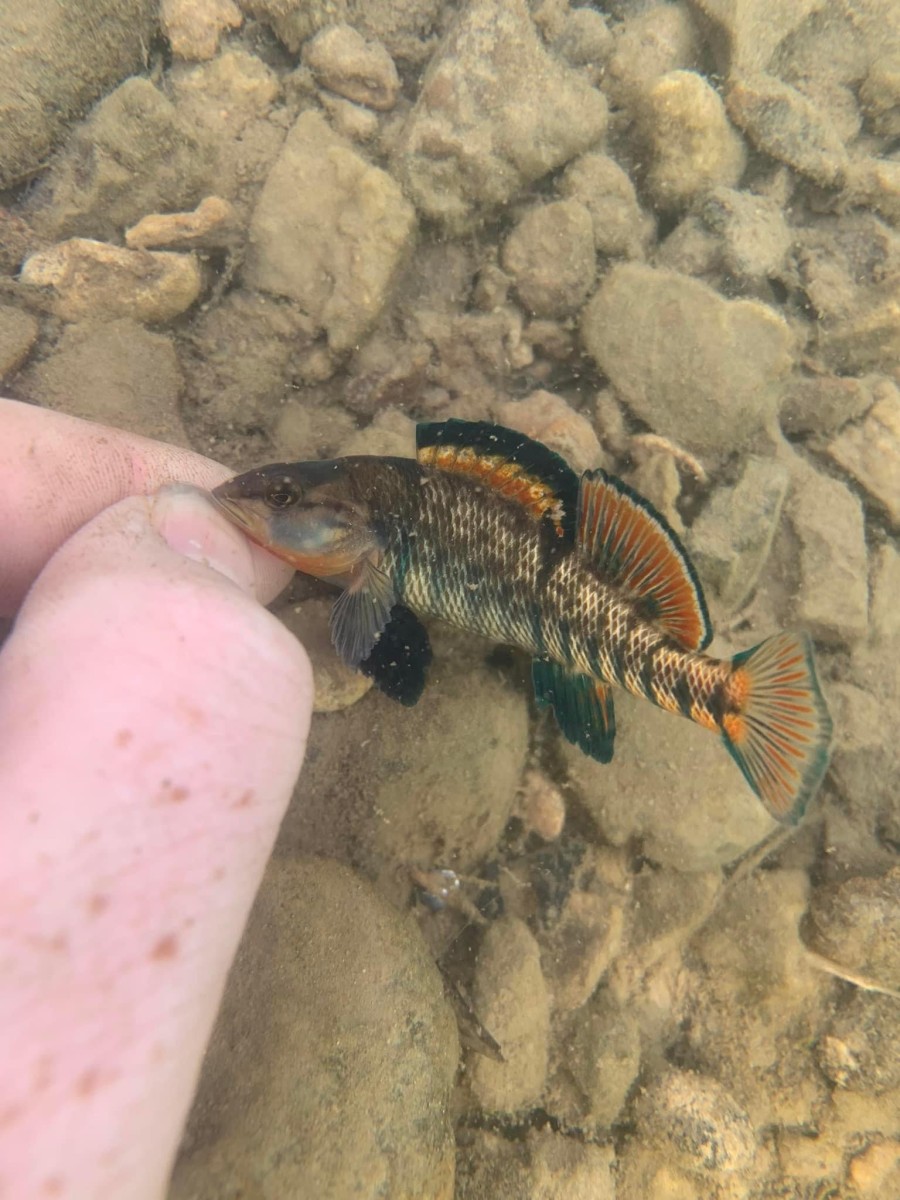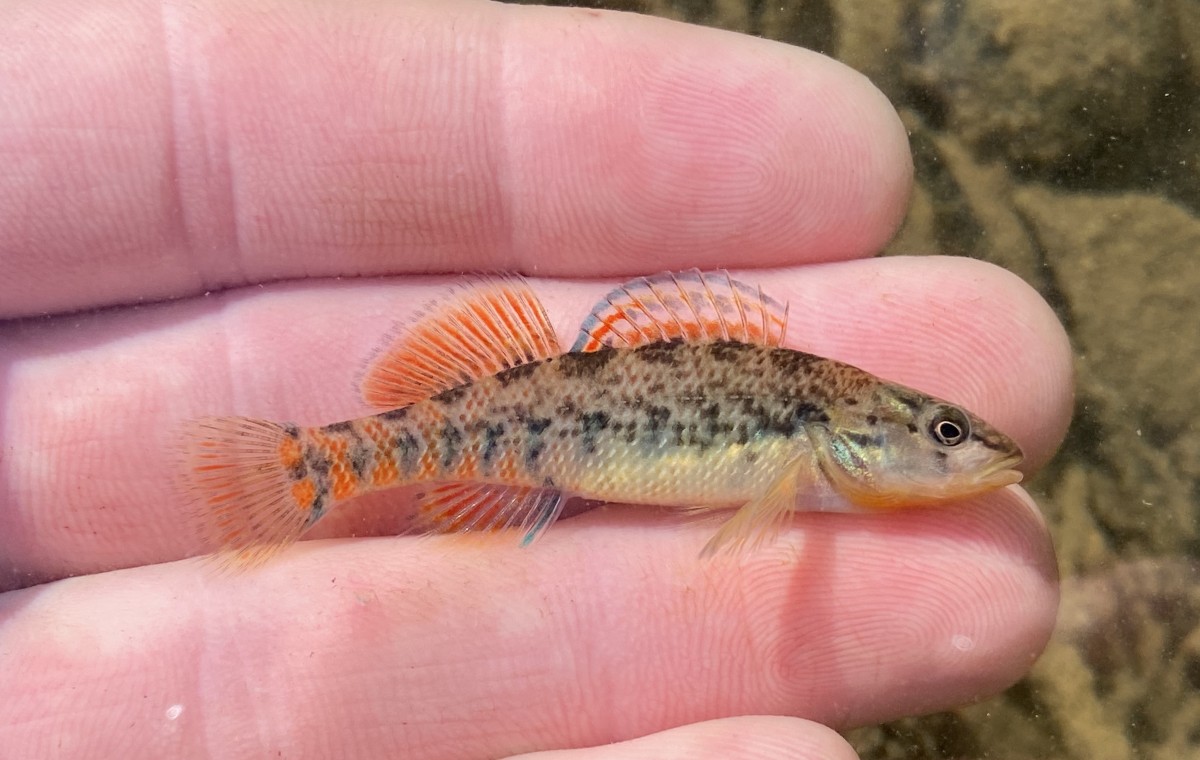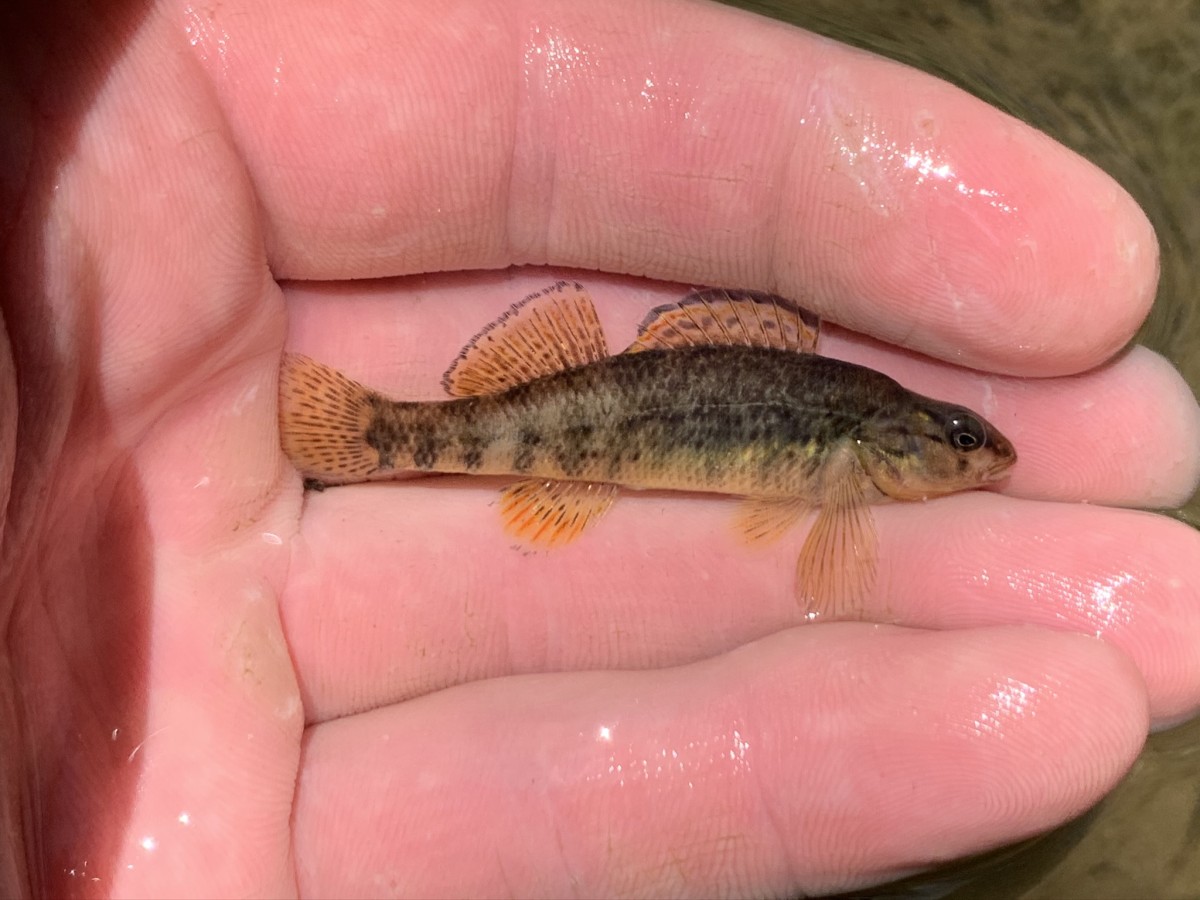Rainbow darter
(Etheostoma caeruleum)
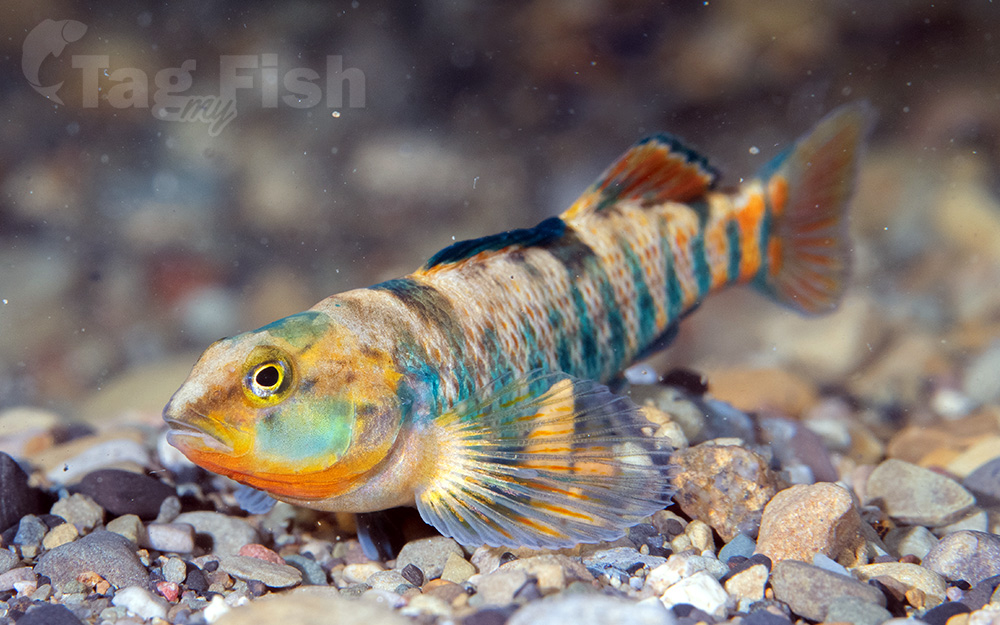
Classification
General data
The rainbow darter (Etheostoma caeruleum) is a small species of freshwater ray-finned fish, a darter from the subfamily Etheostomatinae, part of the family Percidae, which also contains the perches, ruffes and pikeperches. It is native to North America where it is found in small, fast-moving streams and small to medium-sized rivers. It grows to 2 to 3 inches (51 to 76 mm) in length. The species is very sensitive to pollution and silt, staying in clean, pollution-free water. The rainbow darter is easily identified by three dark spots on the back, and blue and orange in the dorsal and anal fins.
The rainbow darter lives in clean, rocky riffles from March through June. It has a lifespan of about 4 years. The males can grow up to 48 mm long, while the largest female reaches just under 43 mm. The male form is resplendent in bright oranges and iridescent blue spots, stripes, and checks.
Distribution
The rainbow darter is a small, benthic freshwater fish found in many creeks and small to medium-sized rivers throughout North America. In particular, it is common throughout the eastern United States, specifically throughout the Great Lakes and Ohio River Valley regions. Its distribution extends south to northern parts of Alabama and as far west as Missouri and Arkansas.
This distribution has been suggested to be due to once-existin glaciers and to its intolerance of brackish water. One study to examine the phylogeography of E. caeruleum and its colonization patterns found its distribution is greatly due to historic glaciations, and furthermore, due to distributions from drainages which have since then resulted in the current morphological diversity of the rainbow darter.
Geographically, the rainbow darter is one of the most abundant and common Darter species. Current distribution shown may be outdated and should be verified with state agencies. Particularly Texas where the species exists in limited number.
